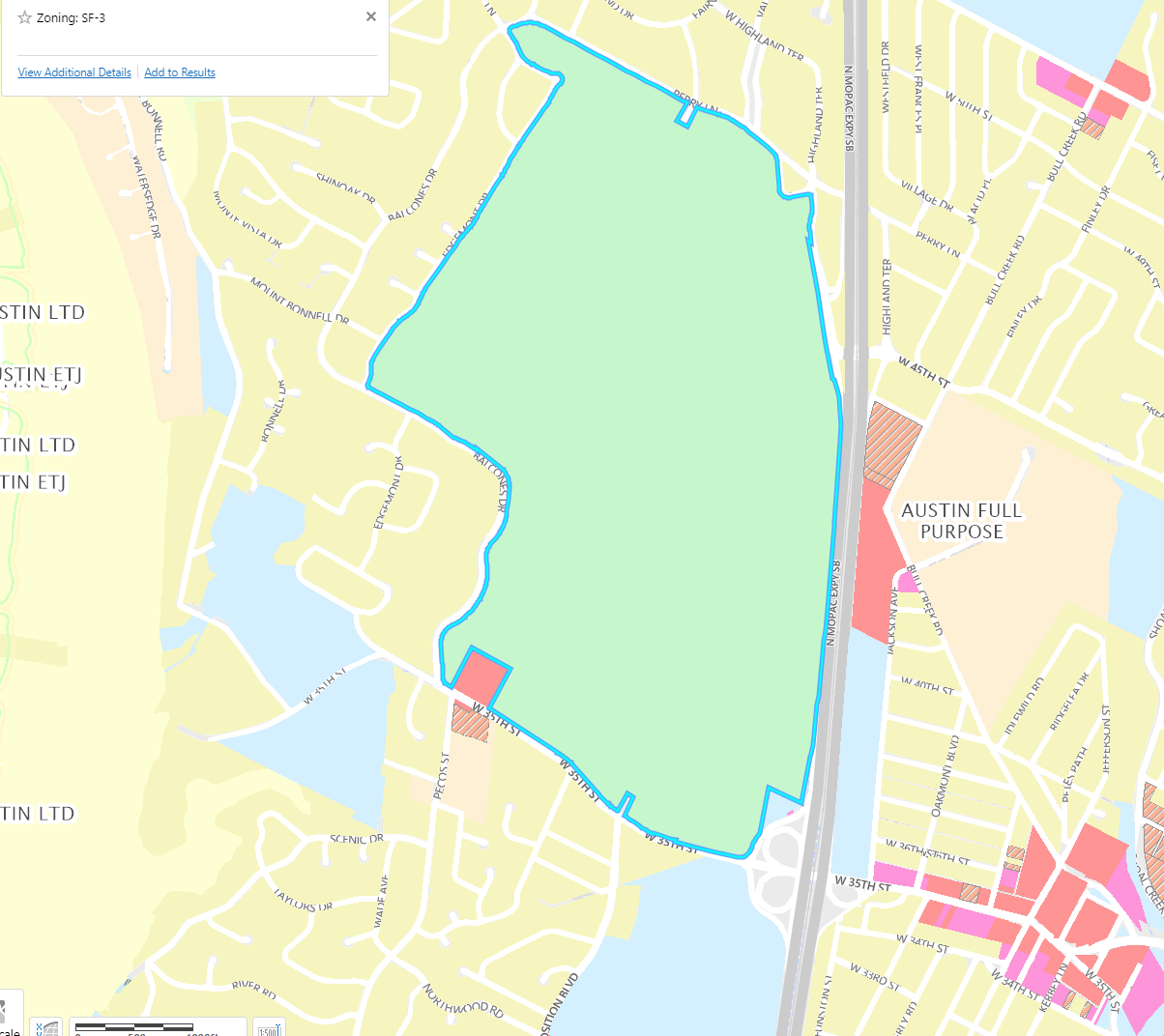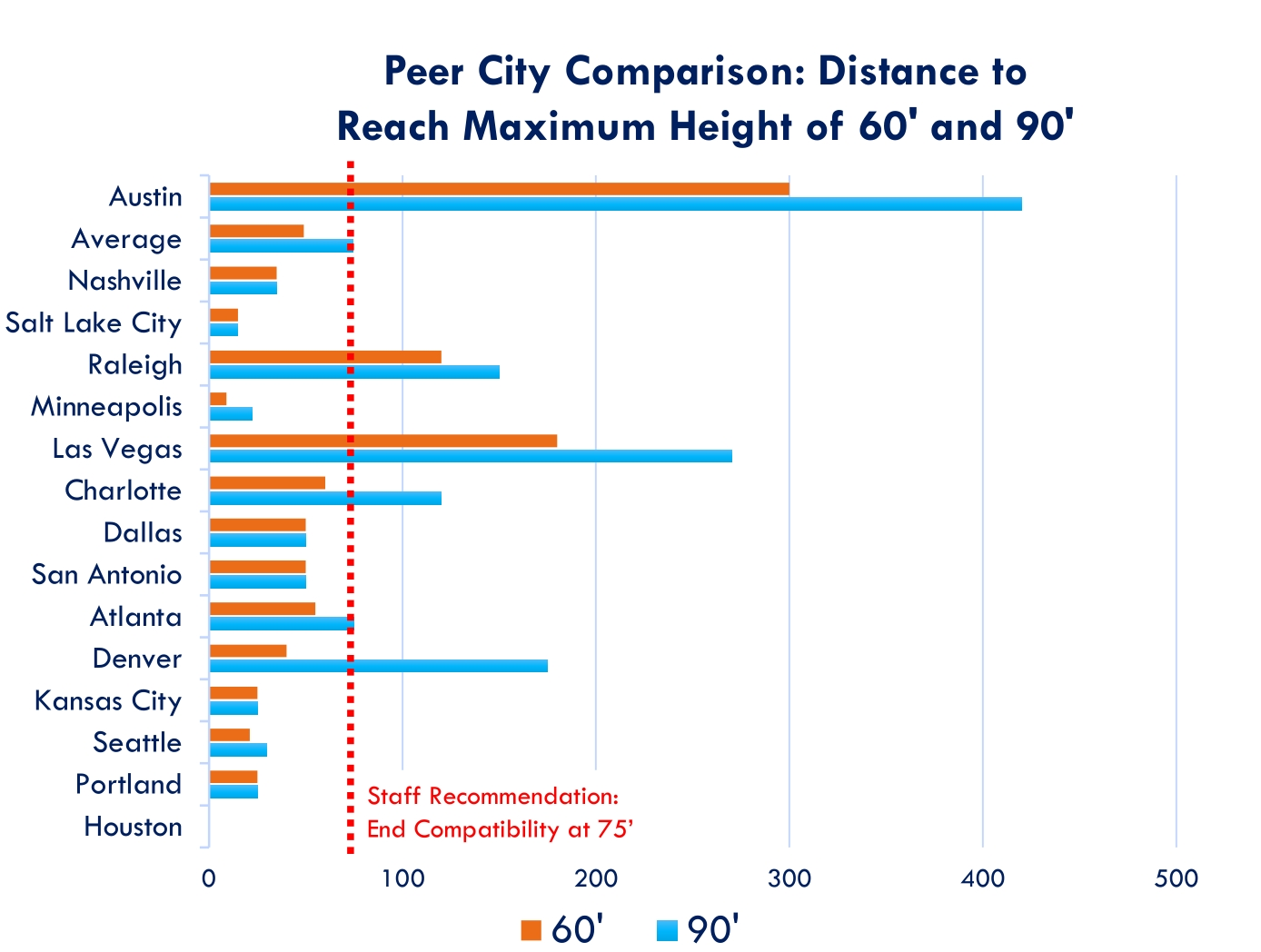Compatibility Restrictions
In Austin
Austin has some of the most restrictive compatibility requirements within the United States. Austin’s current compatibility restrictions are such that:
- A building within 50 feet of a SFH’s lot cannot be more than 40 feet tall.
- A building within 300 feet of a SFH’s lot cannot be more than 60 feet tall.
Effectively this means that tens of thousands of homes are currently illegal to build in Austin even in areas that are zoned for slightly denser housing. If you’ve ever noticed buildings within Austin that look like steps, getting progressively taller/shorter, this is compatibility. An artificial, and inequitable restriction on the amount of housing that can be built.
Austin compatibility is also atypically extreme compared to most other cities. As shown in this chart where Austin has decided that the presence of a single family home can affect housing that is being built 2 blocks away.
Effects of Compatibility
The failure of compatibility does not stop at simply housing. It also has effects on transportation, equity, the environment, and car dependency.
A recent study by the City of Austin on Compatibility Regulations (September, 2023) found that 135,000 housing units are lost in areas already zoned for high density due to compatibility rules. 110,000 of the lost units (82%) are within 1/4th of a mile of an existing transit stop.
Compatibility triggers even when no homes exist on a lot. It requires that if an area is zoned for single family housing then that is enough to restrict what can be built by it. In this way almost completely empty pieces of land, such as the one pictured below, limit what housing can be built around it.

The less dense we can build in places intended for density the less efficient we can make public transit. The less practical we make walking and biking the more we force people into their cars and onto highways to live out their basic needs. The more we inhibit progress on making it possible to live in an environmentally friendly way the worse off we will be. The minor and petty sensibilities of someone who doesn’t like slightly taller buildings should not even be a consideration and yet it is currently central to controlling how Austinites are allowed to live.

